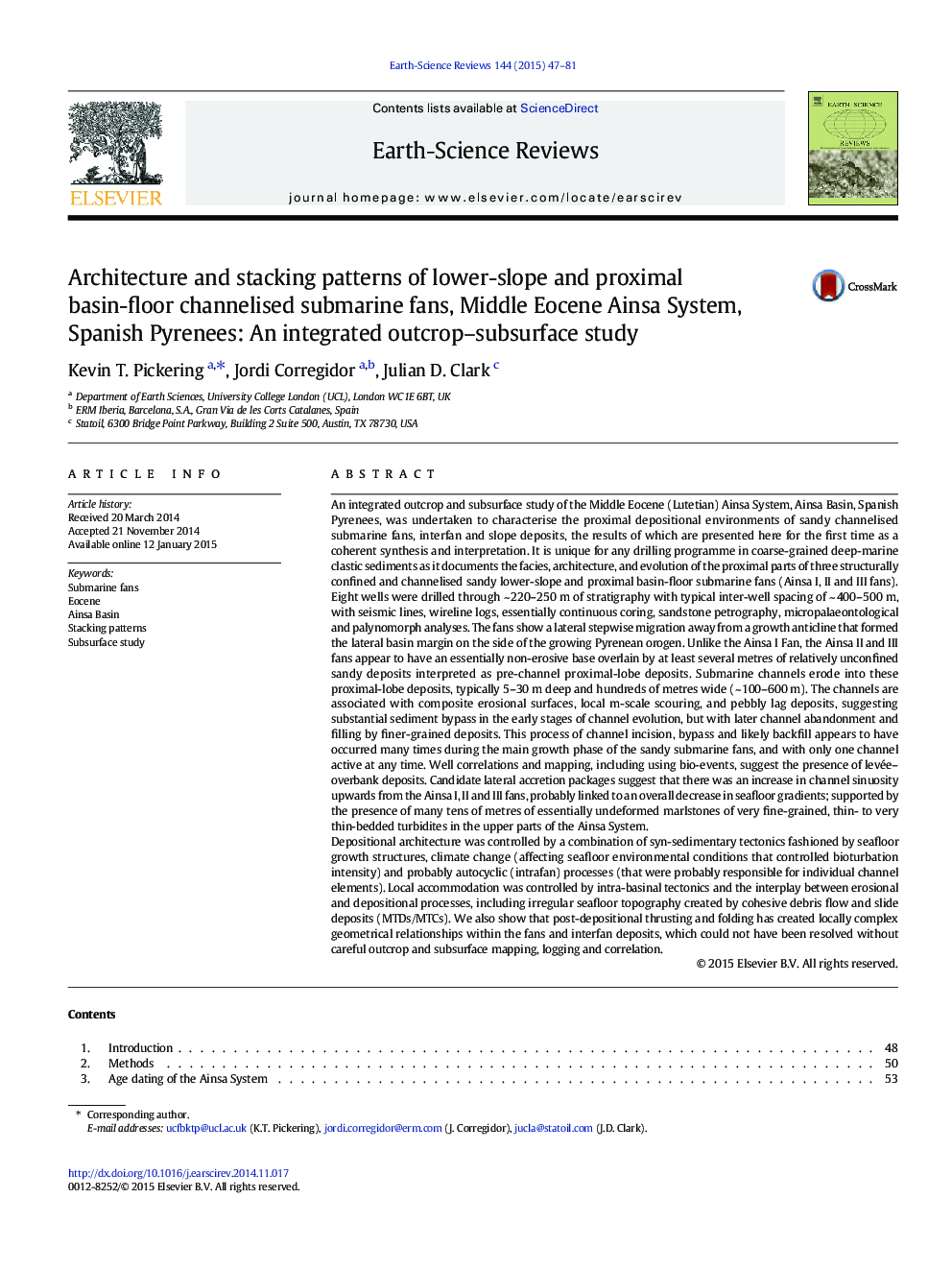| Article ID | Journal | Published Year | Pages | File Type |
|---|---|---|---|---|
| 4725702 | Earth-Science Reviews | 2015 | 35 Pages |
An integrated outcrop and subsurface study of the Middle Eocene (Lutetian) Ainsa System, Ainsa Basin, Spanish Pyrenees, was undertaken to characterise the proximal depositional environments of sandy channelised submarine fans, interfan and slope deposits, the results of which are presented here for the first time as a coherent synthesis and interpretation. It is unique for any drilling programme in coarse-grained deep-marine clastic sediments as it documents the facies, architecture, and evolution of the proximal parts of three structurally confined and channelised sandy lower-slope and proximal basin-floor submarine fans (Ainsa I, II and III fans). Eight wells were drilled through ~ 220–250 m of stratigraphy with typical inter-well spacing of ~ 400–500 m, with seismic lines, wireline logs, essentially continuous coring, sandstone petrography, micropalaeontological and palynomorph analyses. The fans show a lateral stepwise migration away from a growth anticline that formed the lateral basin margin on the side of the growing Pyrenean orogen. Unlike the Ainsa I Fan, the Ainsa II and III fans appear to have an essentially non-erosive base overlain by at least several metres of relatively unconfined sandy deposits interpreted as pre-channel proximal-lobe deposits. Submarine channels erode into these proximal-lobe deposits, typically 5–30 m deep and hundreds of metres wide (~ 100–600 m). The channels are associated with composite erosional surfaces, local m-scale scouring, and pebbly lag deposits, suggesting substantial sediment bypass in the early stages of channel evolution, but with later channel abandonment and filling by finer-grained deposits. This process of channel incision, bypass and likely backfill appears to have occurred many times during the main growth phase of the sandy submarine fans, and with only one channel active at any time. Well correlations and mapping, including using bio-events, suggest the presence of levée–overbank deposits. Candidate lateral accretion packages suggest that there was an increase in channel sinuosity upwards from the Ainsa I, II and III fans, probably linked to an overall decrease in seafloor gradients; supported by the presence of many tens of metres of essentially undeformed marlstones of very fine-grained, thin- to very thin-bedded turbidites in the upper parts of the Ainsa System.Depositional architecture was controlled by a combination of syn-sedimentary tectonics fashioned by seafloor growth structures, climate change (affecting seafloor environmental conditions that controlled bioturbation intensity) and probably autocyclic (intrafan) processes (that were probably responsible for individual channel elements). Local accommodation was controlled by intra-basinal tectonics and the interplay between erosional and depositional processes, including irregular seafloor topography created by cohesive debris flow and slide deposits (MTDs/MTCs). We also show that post-depositional thrusting and folding has created locally complex geometrical relationships within the fans and interfan deposits, which could not have been resolved without careful outcrop and subsurface mapping, logging and correlation.
